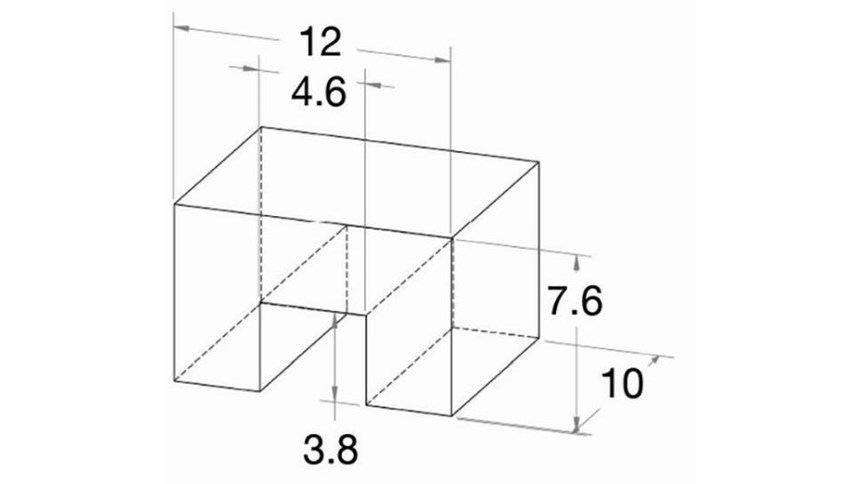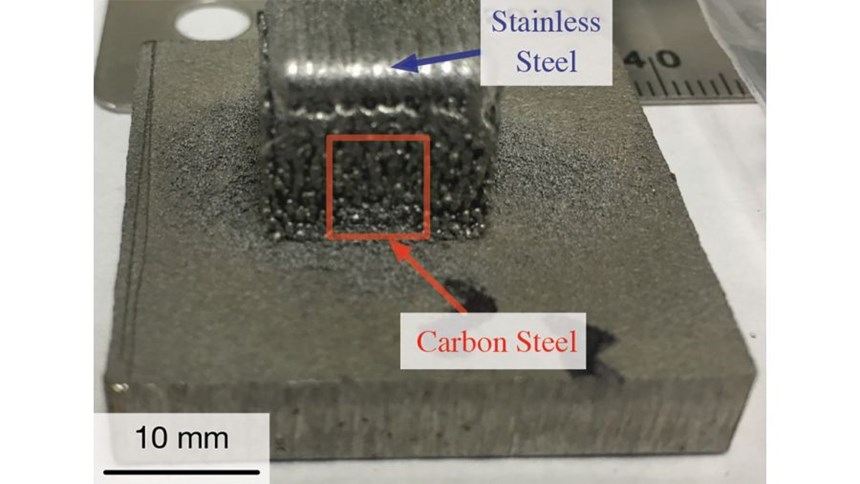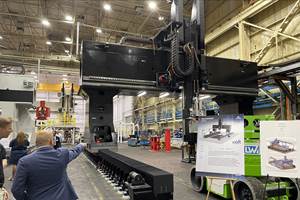Dissolvable Support Structures for Metal? Researchers Validate This Possibility
A 3D-printed stainless steel part was built using a support structure made of a different metal. No mechanical removal of the support structure was needed. The support was entirely dissolved away, eliminating an often-difficult manual step.
Share
Read Next
Support structures are a reality of 3D printing. If the part’s features can’t resist gravity while they are being grown and while they are still incomplete, then material must to be added to the design and to the build to support the form’s bridges and overhangs while the part is taking shape. These support structures then have to be removed to finish the part.
Certain polymer 3D printing processes have solved this problem. Supports can be printed in a material different from the main part that is dissolvable in a postprocessing solution. The support structures melt away within this solution, leaving only the intended part behind. In metal, by contrast, support removal is more difficult—and more crude. Supports are frequently removed from metal AM parts using pliers or chisel. The rough manual work is inefficient and risks damaging the part itself.
Could something like the same approach used in plastics—dissolving supports away—apply to metal 3D printing as well?
Answer: Yes. That is the finding of an evaluation performed recently on a part 3D printed in stainless steel. The researchers involved in the study were Owen Hildreth of Arizona State University, Kevin Chasse of the Naval Surface Warfare Center, and Abdalla Nassar and Timothy Simpson, both of Pennsylvania State University’s Center for Innovative Materials Processing through Direct Digital Deposition (CIMP-3D). In the experiment these researchers conducted, the stainless part’s bridging overhang was held up by a support volume made of carbon steel, with this support then washed away through electrochemical etching in a solution of nitric acid.
The drawing in the series of illustrations above shows the dimensions of the test piece. 3D printing was performed on an Optomec Laser Engineered Net Shaping (LENS) machine using two powder feeders to apply the two different steels in the same cycle. A volume of carbon steel filled the entire 3.8 × 4.6 × 10-mm volume underneath the stainless steel component’s bridge.
Compared to stainless, carbon steel has greater potential to oxidize. Differences in oxidation tendency have been leveraged to obtain sacrificial material in other applications. On boats, for example, sacrificial zinc oxidizes to protect the stainless steel hull.
One notable finding of the 3D printing experiment is that oxygen is an aid to efficiency. Etching with the acid solution for 10 hours caused only a 1.4-mm depth of support material to be dissolved from each side of the part. This was slow going. But when O2 bubbling was added, another 6 hours was enough to dissolve all the rest of the support metal away. Ultimately, the removal was so complete that no additional manual or mechanical work was necessary to aid support removal.
An important question addressed with this test was whether the electrochemical etching would have an adverse effect on the final part. In this case, it did not. Indeed, the part was left in the acid solution 10 minutes after all of the support metal was gone, with no observable damage to the intended component. The clear implication of this finding is that chemical dissolving potentially provides an efficient, unattended method for batch removal of support structures as additive manufacturing is applied in full-scale production.
Update: More recent work has validated an option for dissolving support structures when the structures and the part are all one material (the case with powder bed fusion). This approach involves engineering thin supports and infusing carbon into the material to facilitate controlled dissolution. Read the follow-up article.
Related Content
Additive Manufacturing Is Subtractive, Too: How CNC Machining Integrates With AM (Includes Video)
For Keselowski Advanced Manufacturing, succeeding with laser powder bed fusion as a production process means developing a machine shop that is responsive to, and moves at the pacing of, metal 3D printing.
Read MoreWorld’s Largest Metal 3D Printer Seen at Ingersoll Grand Opening Event
Maker of large additive and subtractive machines adds capacity in Rockford, Illinois.
Read MoreHow Siemens Energy Applies Additive Manufacturing for Power Generation and More
At an applications center in Orlando, Florida, a small team of AM specialists is spanning industries by 3D printing parts to support both Siemens Energy power generation systems and external customers.
Read More10 Important Developments in Additive Manufacturing Seen at Formnext 2022 (Includes Video)
The leading trade show dedicated to the advance of industrial 3D printing returned to the scale and energy not seen since before the pandemic. More ceramics, fewer supports structures and finding opportunities in wavelengths — these are just some of the AM advances notable at the show this year.
Read MoreRead Next
4 Ways the Education and Training Challenge Is Different for Additive Manufacturing
The advance of additive manufacturing means we need more professionals educated in AM technology.
Read MoreHybrid Additive Manufacturing Machine Tools Continue to Make Gains (Includes Video)
The hybrid machine tool is an idea that continues to advance. Two important developments of recent years expand the possibilities for this platform.
Read MoreAt General Atomics, Do Unmanned Aerial Systems Reveal the Future of Aircraft Manufacturing?
The maker of the Predator and SkyGuardian remote aircraft can implement additive manufacturing more rapidly and widely than the makers of other types of planes. The role of 3D printing in current and future UAS components hints at how far AM can go to save cost and time in aircraft production and design.
Read More

























